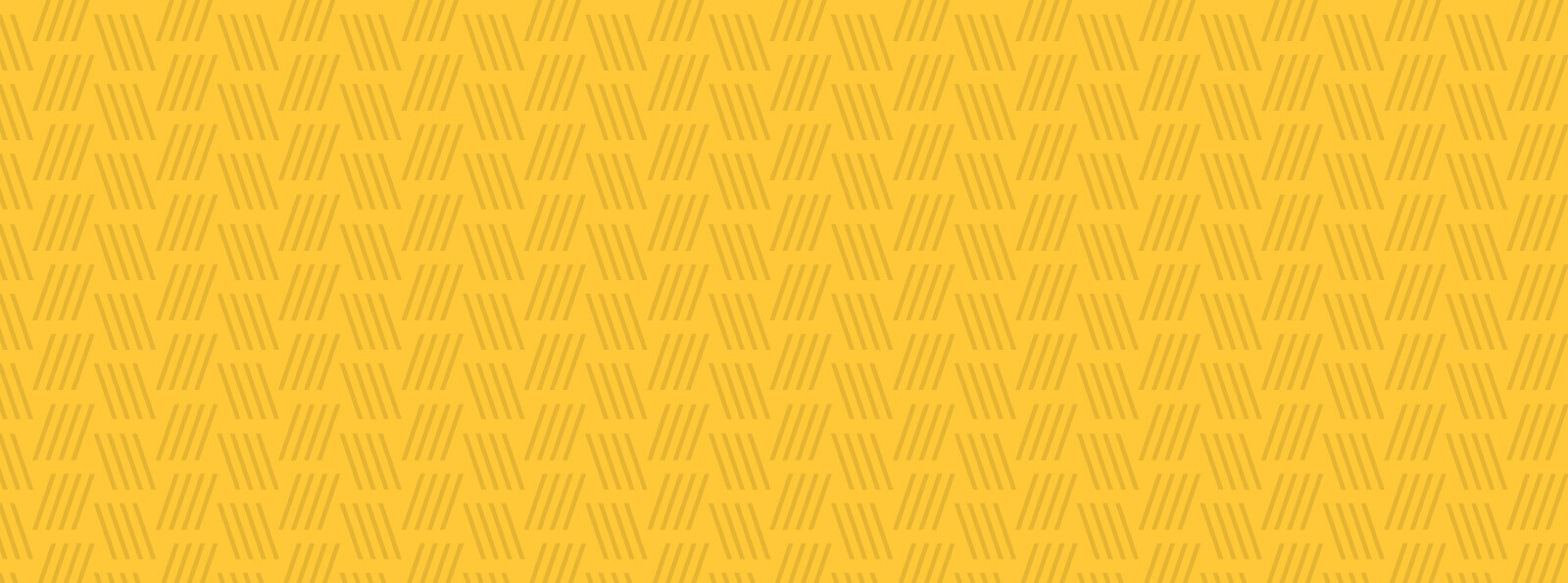About the Artist
Greg Metcalf was born in Washington state, grew up in Asia and Minnesota and somehow ended up in Maryland where he has been making ritual objects for two decades.Artist's Statement
These works are examples of ritual art for contemporary American culture. Initially inspired by Congolese power figures (mnkisi), these sculptures are intended to function as icons for their owners, interactive vehicles for their therapeutic energies. Each represents a significant figure now on the other side, an individual one might want to call upon to intervene on his or her behalf. Each work also embodies a significant attribute serving as a focal point of contemplation to help heal deficiencies in the lives of the object’s owner. The owners’ interactive engagement with the works may take the form of different ritual traditions: driving nails (mbau) into the figures in the Congo tradition, attaching Milagros in folk Catholic traditions of Latin America or tying prayers to them in Mediterranean region traditions. The pieces are intentionally aged and “used” to confound their existence as precious objects.Featured Work
Photos
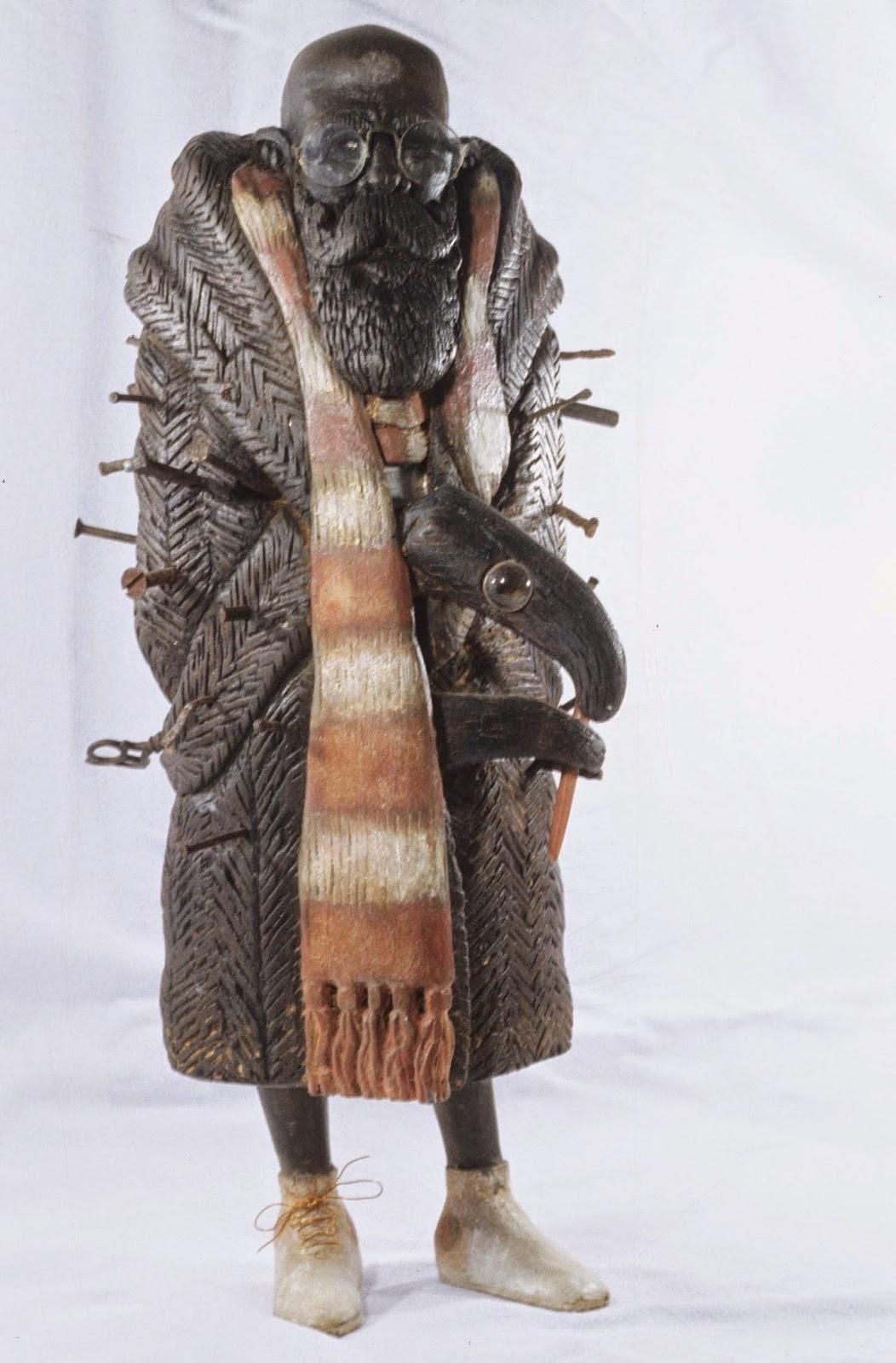

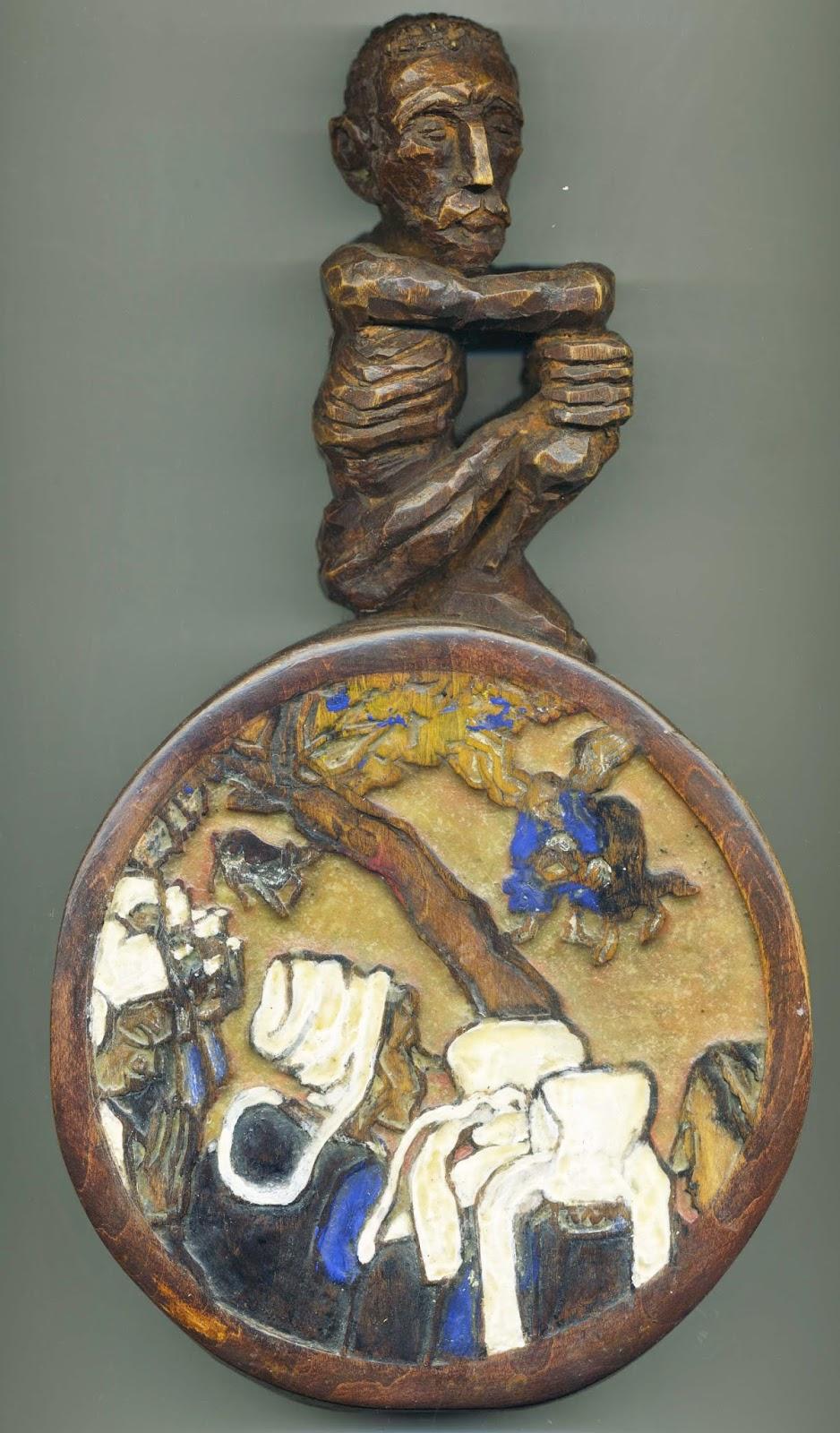
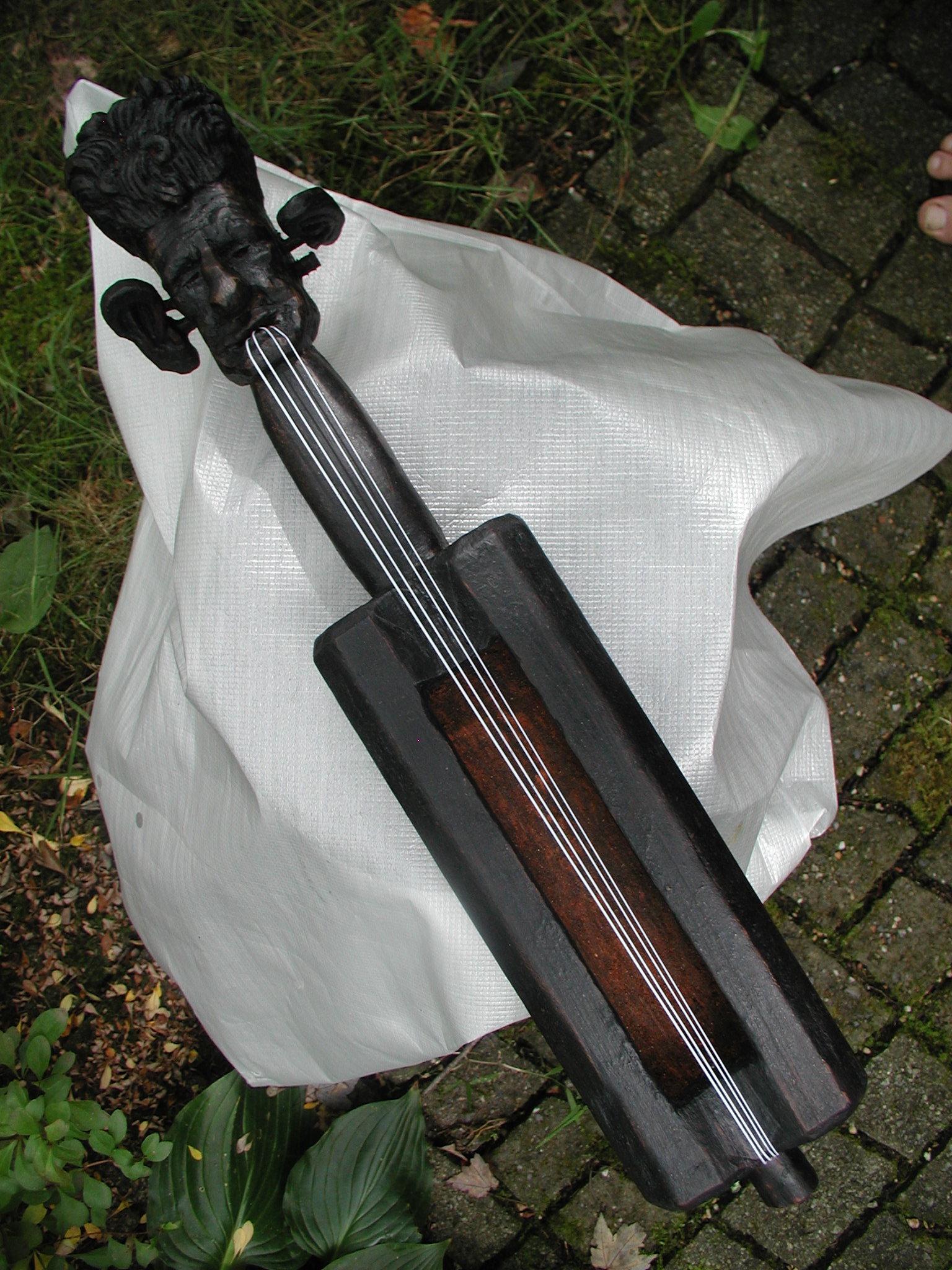
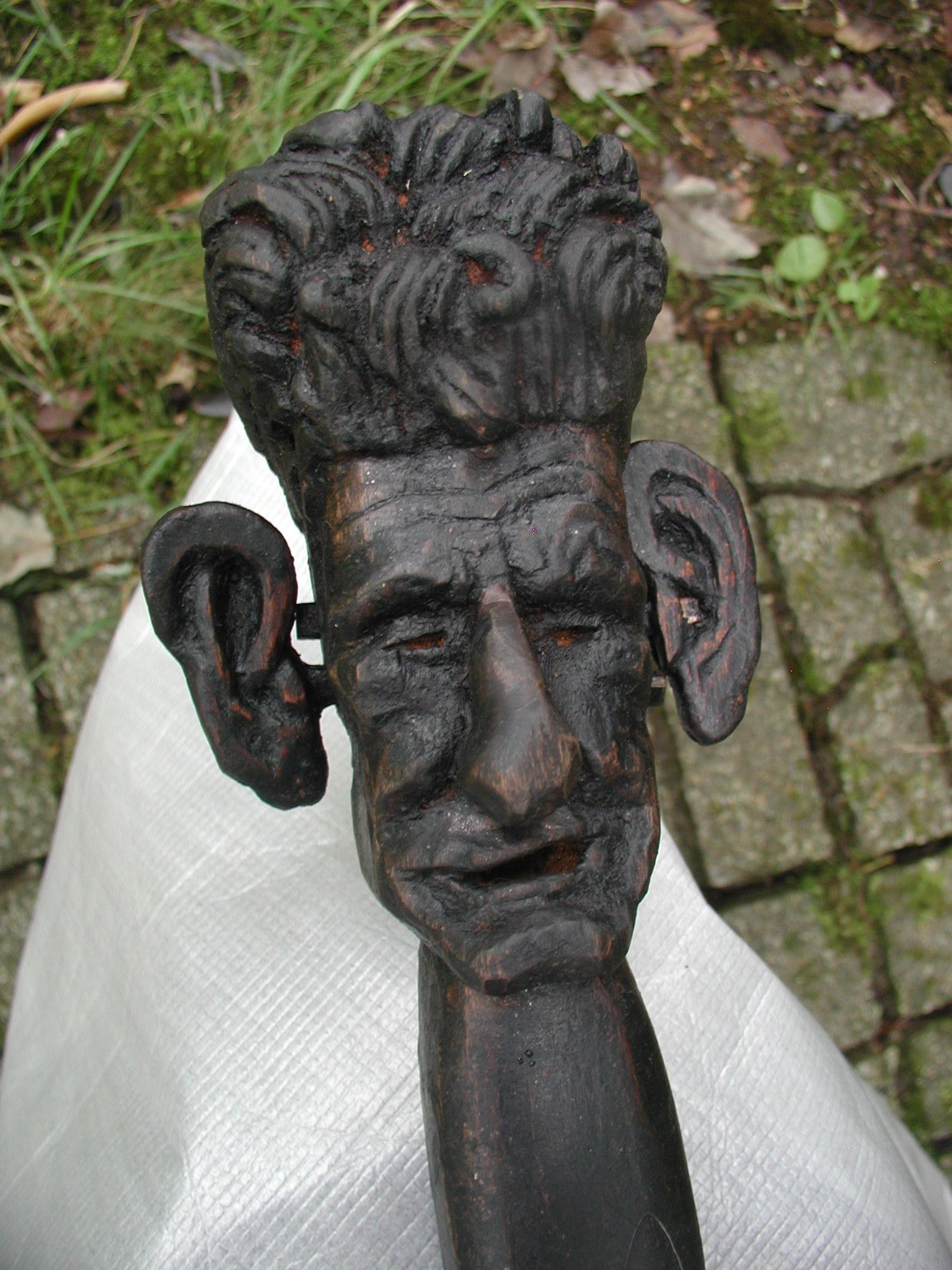

Featured Work: Photos
Edward Gorey - an Illustrator's nkisi
wood and assorted materials
2010
Edward Gorey was a retro-Victorian surrealist illustrator. He is presented in his most typical self-portrait attire of a self-obscuring, expansive and cross-hatched fur coat. Accentuating the artist’s self-concealment, Gorey brandishes no weapon; his hands are hidden in his pockets. Emerging from the coat is The Doubtful Guest, the title creature from an early Gorey book which stands as Gorey’s preferred revelation of himself and is redundantly phallic enough to empower the nkisi. The Guest also brandishes a traditional crowquill pen. Gorey wears the Guest’s hightop sneakers.
Dr. Seuss (Theodore Geisel) - a Childworld nkisi
wood and assorted materials
2002
Dr. Seuss stands for creativity given to adults in the service of children. In his right hand he brandishes a complicated Dr. Seuss machine for identifying or writing. In his left he holds the hat of the Cat in the Hat. In his mirror box is the little piece of fuzz on the pink thistle, home of the overlooked Hoos of Hooville in Horton Hears a Who. For obvious reasons, Seuss’s mbau are crayons.
Paul Gauguin dogbell
wood and assorted materials
2016
Paul Gauguin sits atop a bell that repeats two of his works, the painting of Vision after the Sermon and the 1890 carved panel from Tahiti, “Be Mysterious.” ,The first embodying Gauguin’s Brittany primitivism the second his South Sea primitivism. Gauguin sits with his arms crossed in the position that means “All is finished. There is no more.”
Lyle Lovett "ukulele"
wood and assorted materials
2018
a stringed instrument with Lyle Lovett's head
Lyle Lovet "ukulele" (unstrung detail)
wood and assorted materials
2018
a stringed instrument with Lyle Lovett's head
Warren Zevon nkisi
Wood and assorted materials
2016
Warren Zevon – a perseverance/acceptance of mortality nkisi
Zevon is presented as a boxer, at the end of a fight, with his hands still taped and bloodied, (alluding to his creative persona most explicit in his song title, Piano Fighter, and, perhaps, to his father’s influential though short career as a professional boxer). Zevon’s cocked eyebrow suggests the ironic attitude that completed his persona. Zevon’s torso juxtaposes the death’s head in a mirror box with the virility of a rock guitar neck and strings. The mbau refer to Zevon’s ironic dance with death throughout his life and work and the cigarettes/lung cancer which finally killed him.
